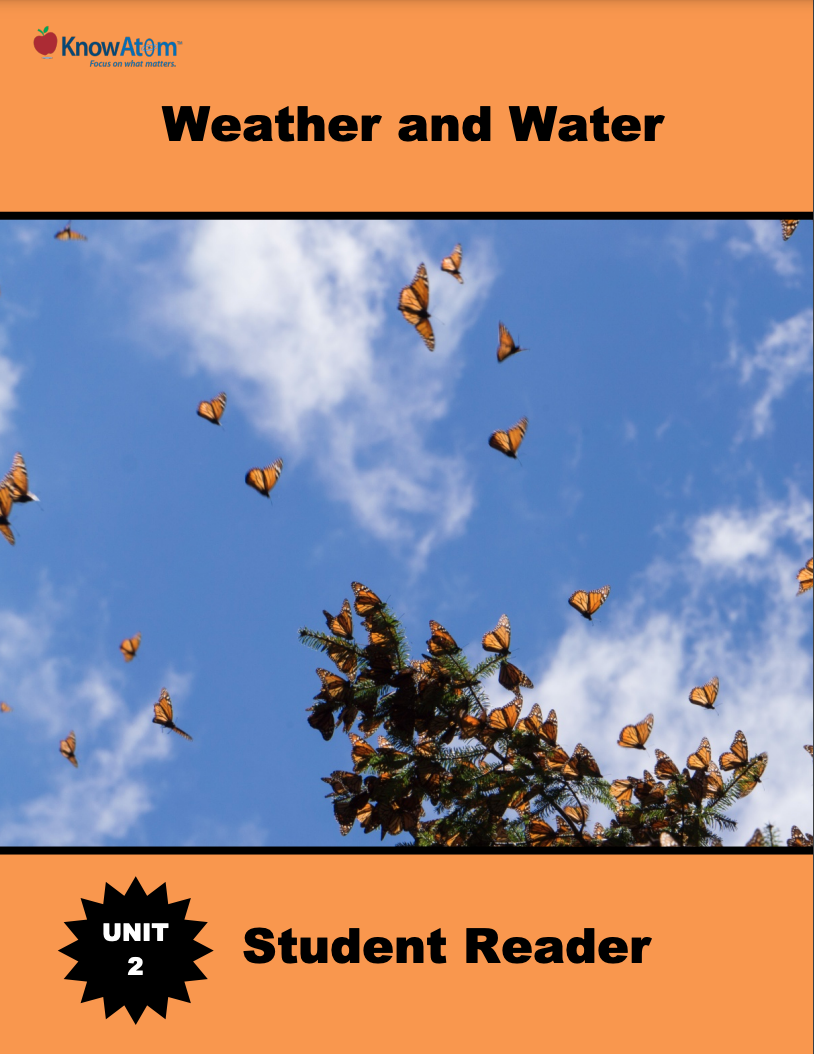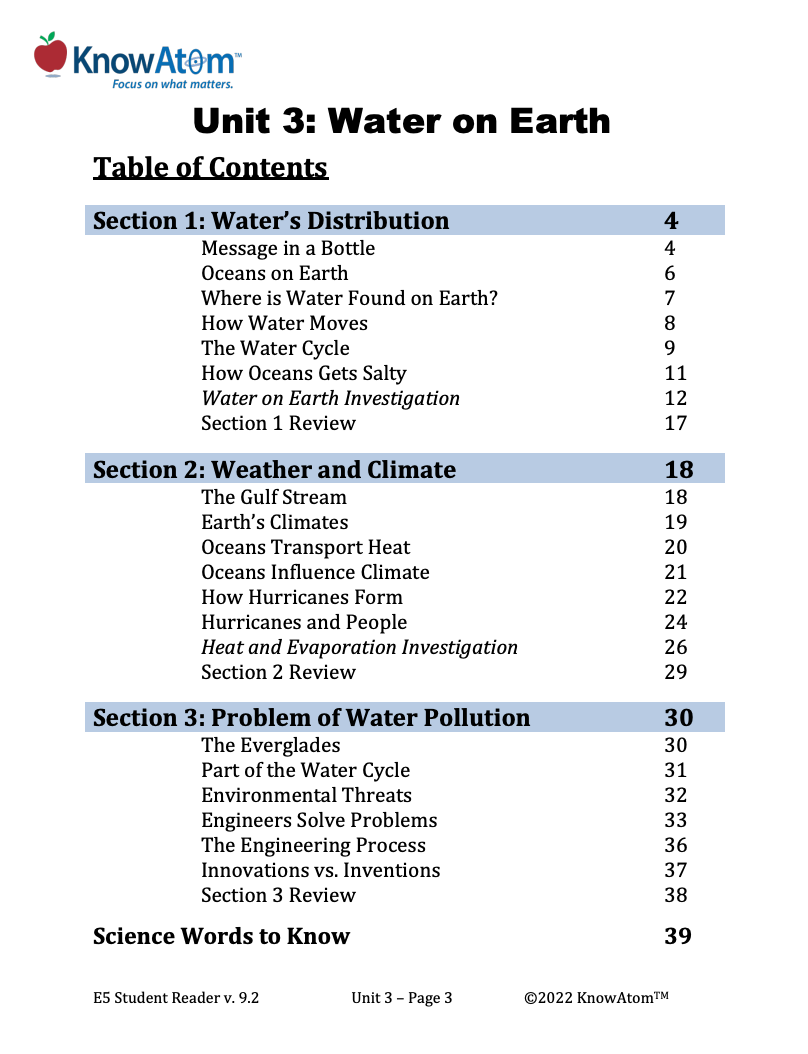
In this unit, students use the scientific process to analyze Earth’s place in the solar system. They begin by modeling how matter is made up of tiny particles called atoms, and changes state when heat is added or removed. This page provides an overview of lesson 1B in which students explore the science phenomena of how heat affects matter.

In the last unit, students learned about matter as they explored Earth’s position in the solar system. In this unit, students discuss how the sun provides light and heat to Earth, powering the water cycle, which in turn influences weather and climate. Students analyze the science phenomena of weather patterns in specific regions during a particular season.

In this unit, students analyze the phenomena of Earth’s interacting systems, focusing on how the hydrosphere interacts with and is influenced by the other systems. In this lesson, students graph and model the distribution of fresh water and salt water on Earth and use a physical model to analyze how fresh water moves and becomes salty. This page showcases each section of this lesson.

In this unit, students analyze the science phenomena of the important role that oceans play in regulating Earth’s climate. In this lesson, they focus on how oceans interact with other Earth systems to distribute water and heat around the planet, resulting in various weather patterns, including hurricanes. This page highlights key components of this lesson.
Standards citation: NGSS Lead States. 2013. Next Generation Science Standards: For States, By States. Washington, DC: The National Academies Press. Neither WestEd nor the lead states and partners that developed the Next Generation Science Standards were involved in the production of this product, and do not endorse it.